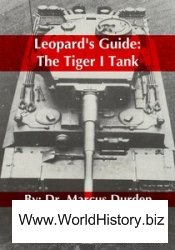The guns in use in the 16th Century were ponderous pieces, drawn by oxen — some required a team of 120 — and assisted over difficult going by elephants trained to push from the rear with their leather-padded foreheads. They seem to have been rigidly mounted on solid-wheeled carriages even into the 17th Century. The size of some siege guns was very great — in the 1630s, Shah Jehan had a pair of 17 foot 90 pounders known as ‘Blessed Victory’ and ‘World Conqueror’; the weight of such weapons was probably the final factor in replacing Mongol mobility by Indian slowness.
By the mid-17th Century, however, a lighter and more mobile artillery force had been added to the heavy pieces, then 70 in number. This was the ‘Artillery of the Stirrup’ (so-called because in constant attendance upon the Emperor’s person), and consisted of 50 or 60 small bronze field pieces, drawn, not by oxen, but by a pair of horses to each gun, and ‘each well mounted on a painted carriage‘ with two ammunition chests, one before and one behind. They were ornamented with red streamers, and, to judge by later examples, one likely type of painted decoration would be a pattern of red hands.
The artillery, though important in sieges, played a secondary part in battle, and were usually placed in front of the army centre, where they could only fire before the main forces joined battle. Like the Turks, the Moghuls often chained their guns together or used natural cover or field defences to protect them from light cavalry, and they
Moghul elephants, heavy cavalry, firearm infantry and camel-mounted band (on right) (The British Museum).

Also used the Turkish trick of lining up the guns behind a first line of skirmishers, so as to provide a sort of ambush for enemy cavalry breaking through.
An interesting addition to the Moghul artillery was the rocket corps or ‘Ban-andaz’. Rockets seem to have been already in use in India in the mid-16th Century. Consisting of an iron tube up to three inches diameter and about a foot long, tied with rawhide to a six to 12 foot bamboo, the rocket could carry an explosive head or sword blade up to 1,000 yards. While highly erratic and unreliable, rockets could be effective against large bodies of troops, especially cavalry, or for setting fire to buildings, and were much easier to transport than artillery. A camel-mounted rocketman, for instance, could carry ten, and although there may have been some launching-tripods, similar to those used in later British service, the standard method of launching required no apparatus at all, being simply to light the fuse and then throw the rocket in the right direction! Rocket sticks were often decorated with a small pennant while being carried.




 World History
World History









